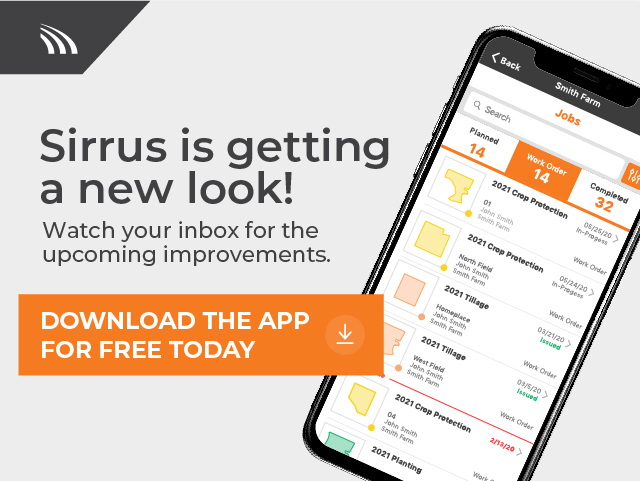Building A Net Promoter Road Map
Last month, I provided a high-level view of getting sales staff aligned with customers in your company or organization using a customer loyalty metric like the Customer Experience Monitor. We discussed why change is hard and the importance of getting front-line staff aligned and involved with improving customer loyalty.
This month, we will begin building a company road map to use customer experiences to guide improvements. A successful journey to increase customer loyalty involves a combination of committed staff, clear process, and data technologies. There is always low hanging (but previously unseen) fruit that can be harvested quickly. I call these Operational wins. Operational improvements generally involve one customer at a time. They are tactical opportunities to improve customer experiences at the point of contact.
Imagine this spring that one of your customers will experience a delay in a field being sprayed. This, in turn, impacts his seeding schedule and he is upset with your company. He calls his sales agronomist, who responds immediately, apologizes for the delay, and then reschedules the application with another rig within the next few hours. The service recovery effort exceeds the customer’s expectations and a possible Detractor is converted to a Promoter. Aren’t you glad the call didn’t get stacked up in voice mail?
Discussing Structure
Other company changes that impact loyalty are more Structural in nature. Implementing them takes longer but they often have a deeper impact on loyalty and revenue than Operational changes. Structural changes typically involve the business model, product design, or service delivery processes.
Let’s move on to survey considerations and see how design decisions there relate to the Operational/Structural issue. As you start to measure your Net Promoter Score, your first decision is whether to implement a Transactional of Relationship survey. Transactional surveys measure specific events involving a customer. The quality of a sales call, clarity of an invoice, or accuracy of field spraying are events where the customer experience can be measured. The timing of the feedback is dictated by the timing of the event. Measurement of these moments of truth often reveal opportunities where service delivery can be improved.
But what if you want to measure the overall health of your relationship with your most profitable customers? We definitely want these relationships to continue! In this case, a customer’s willingness to recommend you likely results from many interactions over one or more sales cycles. In this case, a relationship measurement is needed to gauge the customer’s accumulated experience. Relationship Net Promoter Scores (NPS) capture the overall perception that customers and prospects have of your company and are not based on any one interaction. Typically, relationship NPS are gathered on a periodic basis that reflects a company’s business cycle.
For ag retailers, I recommend a relationship measurement be taken twice a year, potentially in the winter and in the summer before harvest. A consistent data collection strategy helps to build comparable data from one period to another. This, in turn, increases the validity of any decision you make from your customer experience data.
| Operational Improvements | Structural Improvements | |
| Relationship | Relationship management. | Strength and weaknesses of competitors. |
|
Relationship |
Pipeline analysis. | Company messages. |
| |
Account management and performance. | Segmentation. |
| Support of mergers and acquisitions. | ||
| Transactional | Key customer recovery. | Sales quality improvements. |
| Feedback | Manage prospect concerns. | Process improvements. |
| Sales agronomist coaching. | Equipment investments. | |
| Performance management. |
Looking At Transactionals
If the transactional measurements you make are on significant events that drive the strength of your relationship, they will be leading indicators of relationship NPS. In other words, as your NPS increases or falls based on key customer interactions, this will predict the future health of your overall relationship with a customer.
Here’s one final consideration in thinking about transactional vs. relationship measurements: The most effective benchmarking efforts are made across the entire relationship. A specific transactional-type benchmark at a single touchpoint may not reveal whether your organization has successfully differentiated itself. For this reason, AgKnowlogy uses a relationship feedback to benchmark its clients against their competition from a complete end-to-end perspective.
As we conclude this month’s column, you might be thinking that transactional measurements only drive operational improvements, and relationship measurements are used only for structural changes. The reality is that both operational and structural measurements can be used both tactically and strategically. This is shown in the example above.
As we have been discussing in these columns, the quality of a customer’s experiences or a prospect’s perceptions with your company have strong impacts on loyalty (in the case of customers) and the likeliness of trying your service, in the case of prospects. AgKnowlogy’s Customer Experience Monitor measures customer and prospect experience and perceptions to help ag retailers make key operational and structural improvements. Transactional measurements tend to measure the quality of specific events in the customer sales cycle. These measurements help you make operational improvements in how you service customers. Relationship measurements, on the other hand, are meant to measure the overall strength of the customer equity you have built up over time. These measurements can help you make significant structural improvements to your company.
Next month, we’ll discuss the customer corridor, and I will show you how transactional and relationship measurements can be taken along the corridor.





